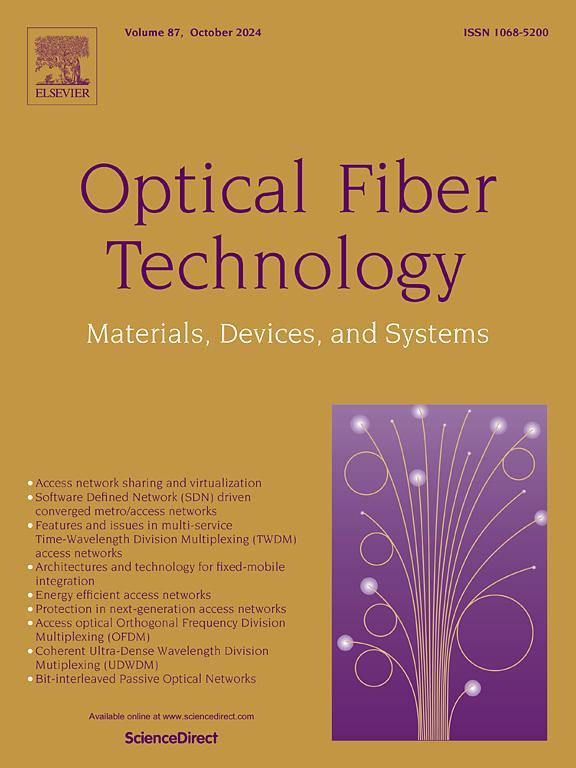Design and implementation of a spiral-structured fiber-optic Fabry–Perot accelerometer for high sensitivity and low cross-axis interference
IF 2.7
3区 计算机科学
Q2 ENGINEERING, ELECTRICAL & ELECTRONIC
引用次数: 0
Abstract
A high-sensitivity fiber Fabry–Perot accelerometer based on involute beams is proposed. The proposed sensor mainly consists of a stainless steel elastic diaphragm and mass blocks adhered to both sides of the diaphragm symmetrically. The fiber end-face is parallel to the surface of the mass block, and the incident light is reflected by the surface of the mass block to form Fabry–Perot interferometer. In order to improve axial sensitivity and reduce transverse interference, a generalized involute model is proposed based on the mathematical model of the involute curve, which maximizes the length of the elastic beam in the finite area of the diaphragm and reduces transverse interference by optimizing the number of elastic beams. The performance of the sensor is simulated and experimentally verified. The results indicate that the natural frequency of the sensor is 120 Hz, the axial sensitivity is /, and the transverse crosstalk is less than 5% of the axial sensitivity. This sensor has good application prospects in low-frequency vibration scenarios of structural health or earthquake monitoring.
高灵敏度、低交叉轴干扰的螺旋结构光纤法布里-珀罗加速度计的设计与实现
提出了一种基于渐开线梁的高灵敏度光纤法布里-珀罗加速度计。所提出的传感器主要由不锈钢弹性膜片和质量块对称粘附在膜片两侧组成。光纤端面平行于质量块表面,入射光经质量块表面反射形成法布里-珀罗干涉仪。为了提高轴向灵敏度和减小横向干涉,在渐开线曲线数学模型的基础上,提出了一种广义渐开线模型,该模型在膜片有限区域内实现弹性梁长度的最大化,并通过优化弹性梁的个数来减小横向干涉。对传感器的性能进行了仿真和实验验证。结果表明,该传感器的固有频率为120 Hz,轴向灵敏度为13.39μm/g,横向串扰小于轴向灵敏度的5%。该传感器在结构健康或地震监测的低频振动场景中具有良好的应用前景。
本文章由计算机程序翻译,如有差异,请以英文原文为准。
求助全文
约1分钟内获得全文
求助全文
来源期刊

Optical Fiber Technology
工程技术-电信学
CiteScore
4.80
自引率
11.10%
发文量
327
审稿时长
63 days
期刊介绍:
Innovations in optical fiber technology are revolutionizing world communications. Newly developed fiber amplifiers allow for direct transmission of high-speed signals over transcontinental distances without the need for electronic regeneration. Optical fibers find new applications in data processing. The impact of fiber materials, devices, and systems on communications in the coming decades will create an abundance of primary literature and the need for up-to-date reviews.
Optical Fiber Technology: Materials, Devices, and Systems is a new cutting-edge journal designed to fill a need in this rapidly evolving field for speedy publication of regular length papers. Both theoretical and experimental papers on fiber materials, devices, and system performance evaluation and measurements are eligible, with emphasis on practical applications.
 求助内容:
求助内容: 应助结果提醒方式:
应助结果提醒方式:


